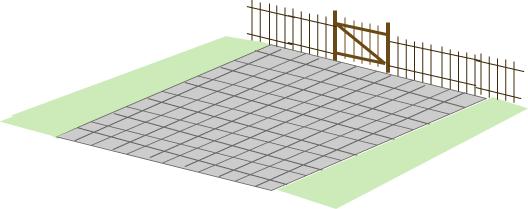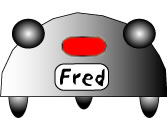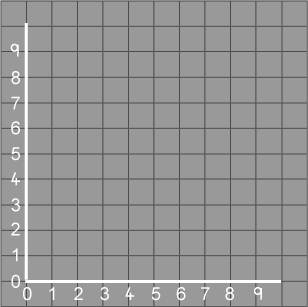Fred the Class Robot
Billy's school has a paved area at the front:

Billy's class had a robot called Fred who could draw with chalk held underneath him.
Billy's teacher drew lines and numbers on the paved area in front of the school so that they could tell Fred where to go.
Billy's teacher put a little cross on the point $(1, 2)$ and the children put Fred on the cross. Fred moved to $(4, 7)$, then to $(4, 2)$ and then back to $(1, 2 )$. Fred's chalk drew a line to show where he had been.
"What shape has Fred drawn?" asked Billy's teacher.
"A triangle!" shouted all the class.
All the children wanted to make Fred draw shapes.
Tom had the first turn. He got Fred to go from $(6, 1)$ to $(6, 6)$, and then to $(1, 6)$ and $(1, 1)$ and back to $(6, 1)$.
What shape had Fred drawn?
Vicky made Fred go from $(2, 1)$ to $(7, 2)$, and then to $(9, 4)$ and $(4, 6)$ and then $(1, 5)$ and back to $(2, 1)$.
What shape had Vicky made Fred draw?
Billy thought very hard when it was his turn. He made Fred go from $(7, 4)$ to $(4, 7)$, and then to $(1, 4)$ and $(4, 1)$ and back to $(7, 4)$.
What shape had Billy made Fred draw?
If Billy had made Fred start at the same place, $(7, 4)$, how else could a shape like this be drawn on the $9$ by $9$ axes? (It doesn't have to be the same size as Billy's first shape.)
A similar activity could be set up practically in the classroom or outside using a floor turtle. In any case squared paper should be provided.
Learners could make their own shapes on squared paper and write down the coordinates.
Suggest drawing the shapes on squared paper. Moving the paper around might help in seeing what each shape is.



